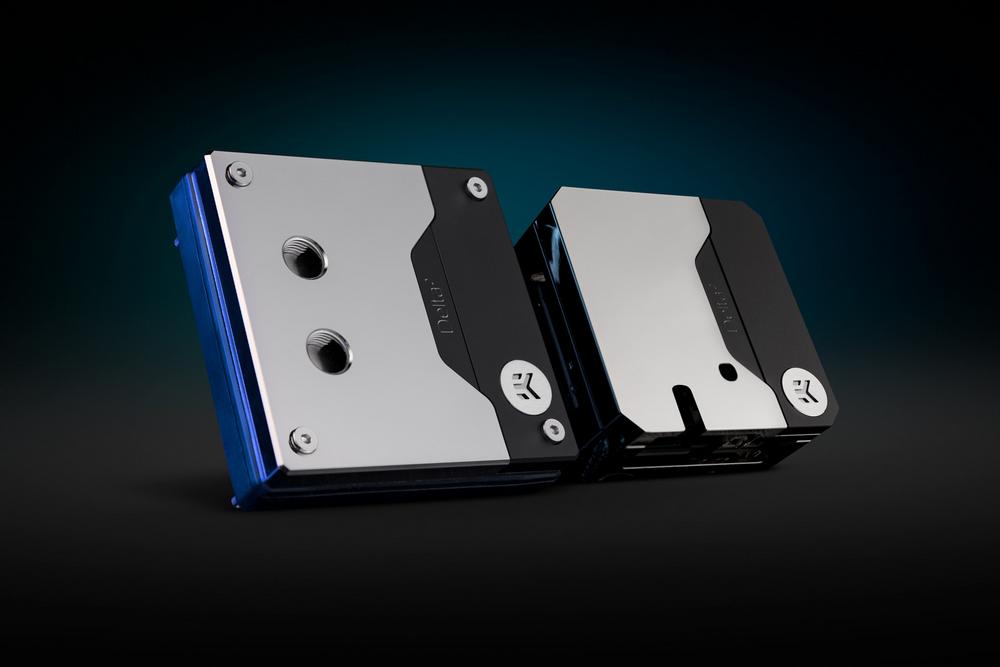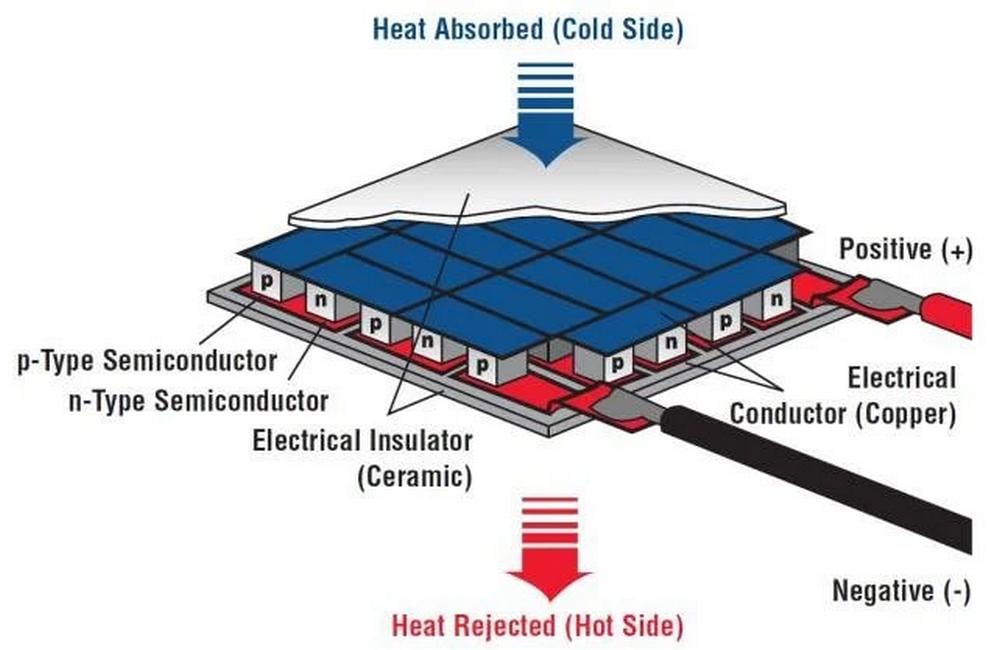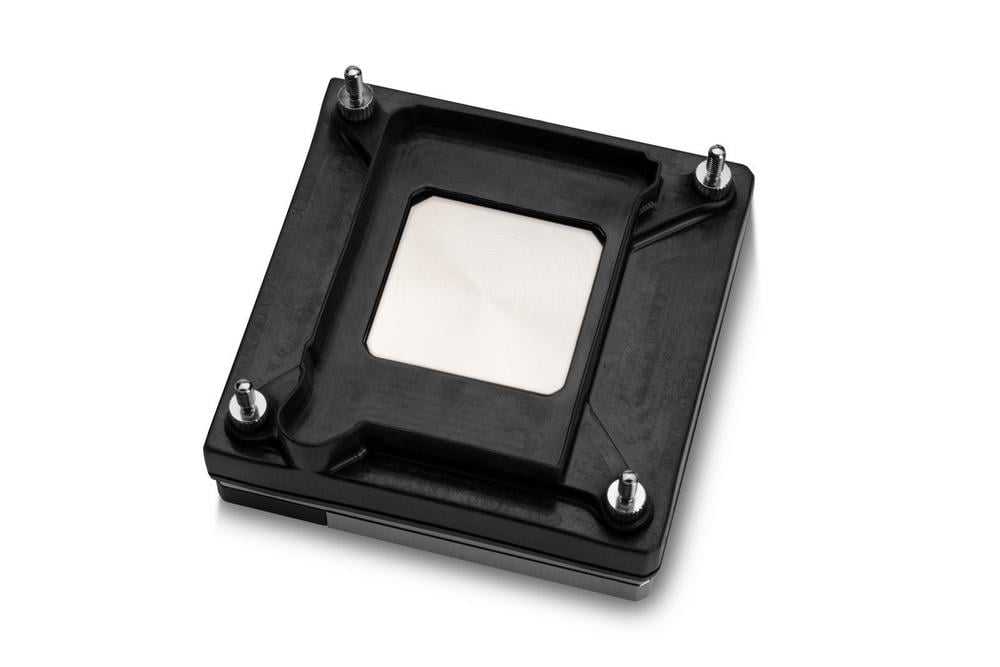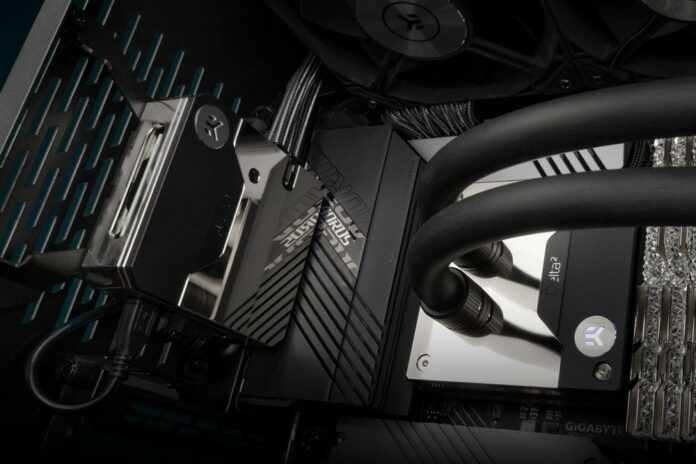EK has released a new TEC extreme cooling solution for Intel LGA 1700 CPUs, bringing sub-ambient temperatures to those willing and wanting to splash the cash.
After its LGA 1200 models, EK is offering its new Delta² TEC for Intel’s latest 12th and 13th Gen processors. Part of the Quantum series of products, the Delta² TEC uses the Peltier (thermoelectric) effect making for an out-of-the-ordinary water block capable of cooling even power-hungry CPUs such as the Core i9-12900K, or in some cases even going sub-zero. One may say, if a water block costs as much as a Core i9, it better be good.

Discovered by French watchmaker and part-time physicist Jean Charles Athanase Peltier, the Peltier or thermoelectric effect is a phenomenon where a potential difference across a thermocouple causes a temperature difference between the junctions of its different materials. Translated into English, this means that when applying a voltage to a TEC device, a temperature difference will build up between each side of the device. This difference can reach 50°C or more.
Peltier modules, also known as thermoelectric coolers or TECs, are made by combining two semiconductor materials disposed in an array of cubes or pellets and covered by a ceramic plate on each side. The hot side will be in contact with the radiator where it will dissipate heat, while the cold side will be touching the source (CPU in our case). When a current flows through the semiconductors, it induces a temperature difference that makes the heatsink side heat up, and the CPU side cool down, cooling whatever is in contact with it.
The nice thing about thermoelectric devices is that they can cool objects without having any moving parts, thus making them very useful in some industrial applications where a lot of dust is present that can rapidly destroy cooling systems based around fans, or where a pump malfunction can lead to catastrophic failures.

While liquid coolers are limited by ambient room temperature, a TEC cooler uses an active system to extract heat from a source and transfer it to an high heat-dissipation device such as, in this case, a liquid radiator.
EK’s Delta² TEC is made of two modules, a water block and a control unit. The former includes a rubber gasket shaped like the motherboard socket area to make a tight seal around the cool side and avoid condensation build-up. While the latter is tasked to power, monitor, and control the Peltier module. EK improves on the original EK-Quantum Delta TEC design offering four TEC plates instead of one and providing better contact with the CPU. Another improvement is that TEC plates are no longer made of aluminium oxide but aluminium nitride (AlN), improving power efficiency.
Keep in mind that TECs also use a lot of power on top of what your CPU is already consuming. The capacity of a TEC is expressed in watts and differs according to each model. The higher the number of watts, the higher the heat source it can cool. The TEC itself can consume from a couple of watts up to hundreds, providing yet another reason for switching to one of those PCIe 5.0 16-pin compatible PSUs, such as MSI’s MEG Ai1300P.

Intel Cryo Cooling Technology continuously monitors the Peltier as well as ambient temperature using sensors located inside the module and control unit adapting to each condition to prevent condensation. The idea is to offer lower than ambient temperatures without going too far. The controller is now a separate element intended to be fixed on a 120mm fan mount in a way not to block the visibility of the water block.
The EK-Quantum Delta² TEC is available for pre-order through the EK Online Store for €445.29, with shipment estimated to begin in mid-August 2022.

